If you’re running a business that deals with products, whether physical goods in a warehouse, items sold through an online store, or inventory in a retail location, you’ve likely encountered the challenges of keeping track of it all. Where is everything stored? What’s running low? What’s overstocked? How can you know when to reorder?
That’s where an Inventory Management System (IMS) steps in.
This comprehensive guide will walk you through everything you need to know about inventory management systems in 2025. Whether you’re a small business owner, ecommerce seller, or managing a growing operation, you’ll learn what these systems do, why they matter, and how to choose the right one for your needs.
What is an inventory management system (IMS)?
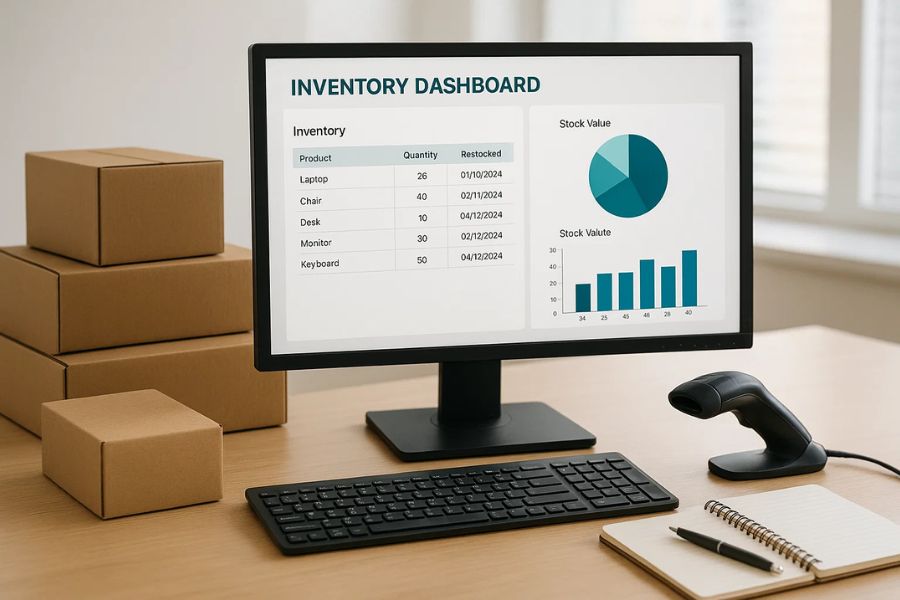
An Inventory Management System (IMS) is a software tool that helps businesses monitor, track, and control their inventory in real time. It acts like the digital brain behind your stockroom, giving you instant access to product quantities, locations, movements, reorder alerts, and more.
Think of it this way: instead of juggling spreadsheets, sticky notes, and manual counts, an IMS automates the entire process—saving time, reducing human error, and allowing your business to run more smoothly.
A good IMS allows you to:
- Track product quantities across multiple locations
- Monitor inventory levels by SKU or variant
- Record sales, returns, restocks, and damaged items
- Predict future stock needs based on trends
- Integrate with sales channels like Shopify, Amazon, or POS systems
In short, it gives you control, accuracy, and visibility.
What are the key features of an IMS?
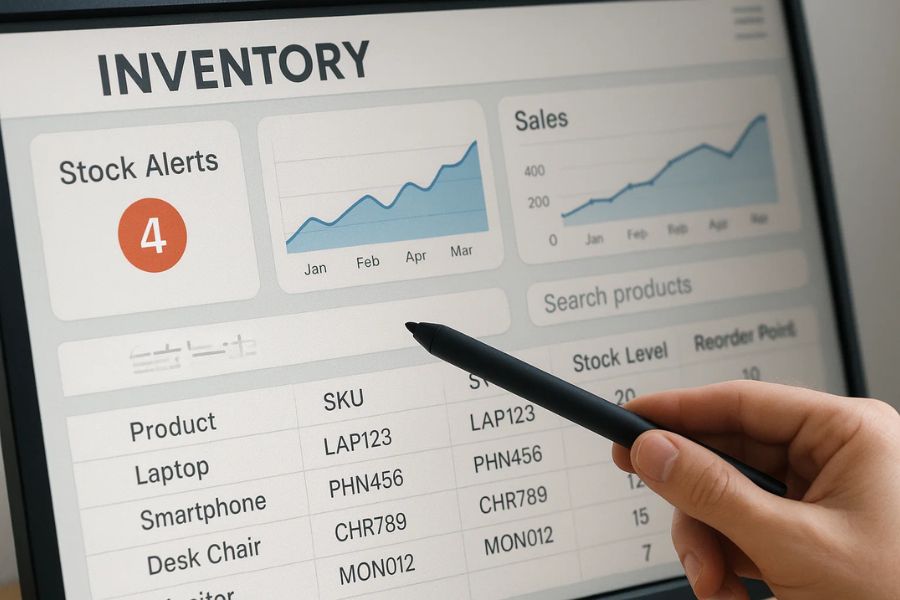
If you’re just getting started with inventory software, here are the most useful features to look for. These will help simplify your workflow, without overwhelming you with unnecessary complexity.
Real-time inventory tracking
This feature keeps your inventory updated live. If you sell an item, receive new stock, or process a return, the system reflects those changes immediately across all channels.
Barcode and QR code scanning
This makes adding or removing items fast and accurate. Scanning instead of typing reduces human error and speeds up your day-to-day operations, especially when receiving inventory or picking items for orders.
Stock alerts and notifications
You can set minimum quantity thresholds for each product. When stock drops below that level, the system automatically alerts you to reorder, preventing stockouts and rushed decisions.
Inventory reporting and analytics
Visual dashboards and detailed reports help you track performance. Learn what sells best, which items stagnate, and how fast inventory turns over. This helps you make smarter decisions with your capital.
Multi-channel integration
Selling across Shopify, Amazon, Etsy, and a physical store? A good IMS syncs all your stock across every channel so you’re never overselling or underselling on any one platform.
Supplier and purchase order management
Track supplier information, generate purchase orders with a click, and monitor incoming deliveries. You’ll have complete visibility into your restocking process.
Returns and damage handling
Returns, exchanges, or damaged goods can be recorded easily. The system adjusts your stock accordingly and helps track patterns, like frequent returns for a specific item.
What are the different types of IMS?
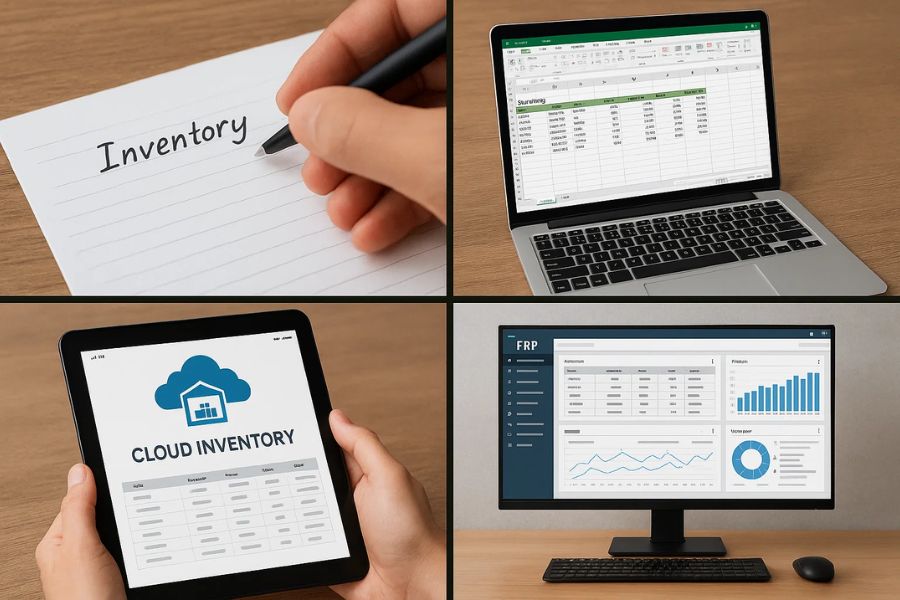
Different systems suit different business types and growth stages. Here’s a breakdown of the four most common types:
Manual inventory systems
This old-school method involves tracking inventory by hand, usually with spreadsheets or written logs. It’s cheap and simple, but also error-prone, time-consuming, and unscalable.
Standalone inventory software
These are software programs specifically built to manage inventory. They usually include barcode support, alerts, and reporting, making them ideal for small to mid-sized businesses that need more control.
Cloud-based inventory management systems
These modern tools are hosted online and offer real-time syncing, remote access, and mobile functionality. They’re especially useful for ecommerce stores and distributed teams.
Enterprise resource planning (ERP) systems
These all-in-one platforms include inventory, accounting, HR, CRM, and more. They’re best for large operations needing deep integration across departments.
How does an IMS work in practice?
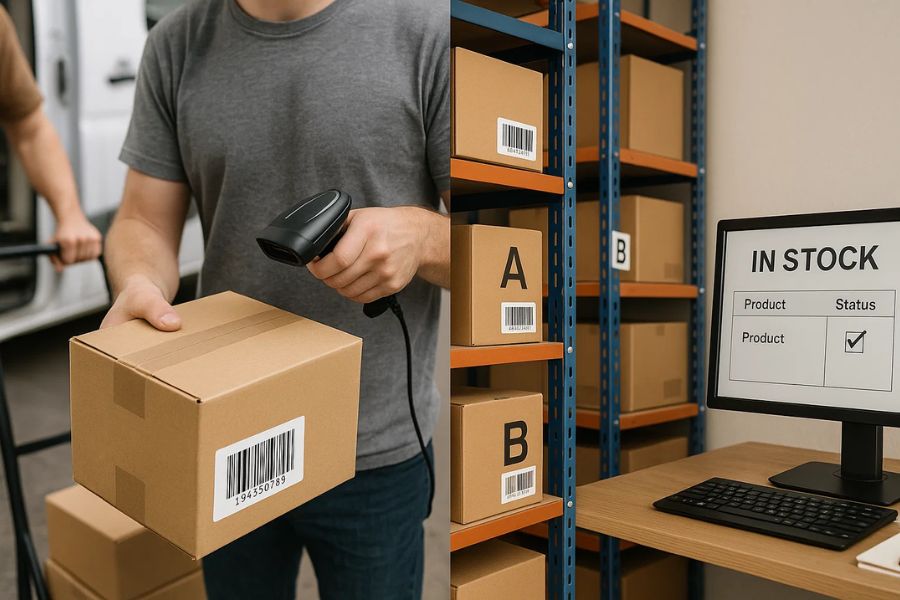
Here’s a real-world breakdown of how an IMS works throughout your inventory lifecycle:
Step 1: Product setup
You begin by entering all product details into the system, like names, SKUs, descriptions, supplier info, and current quantities.
Step 2: Organize by location
Assign each product to a specific bin, shelf, warehouse, or store location. This makes picking and packing faster and eliminates confusion.
Step 3: Sales and inventory movement
As products are sold (online or in-store), the IMS automatically deducts stock. If items are returned or damaged, the system adjusts accordingly.
Step 4: Receiving stock
When new inventory arrives from your suppliers, you scan or manually enter it into the system. This updates your inventory levels instantly.
Step 5: Reordering
Based on your settings, the system will notify you when it’s time to reorder. Some tools even allow automatic PO generation.
Step 6: Reporting
At any time, you can view reports to evaluate what’s working, what’s underperforming, and how much capital is tied up in stock.
What are the benefits of using an IMS?

If you’re still wondering whether it’s worth the investment, here’s a breakdown of the biggest benefits:
Accuracy and visibility
Manual systems are full of errors. An IMS gives you accurate, real-time inventory counts you can trust, minimizing surprises and lost sales.
Time and labor savings
No more hours wasted checking spreadsheets or counting items manually. Your team becomes more efficient, and you spend less time fixing mistakes.
Increased profitability
By eliminating overstocking, you free up cash. By avoiding stockouts, you make more sales. The result? A healthier bottom line.
Scalability
As your business grows, manual methods fall apart. An IMS helps you handle more orders, more products, and more complexity, without hiring a huge team.
Better decision-making
Your IMS tells you what products to promote, which ones to discount, and what to reorder. It removes guesswork and adds strategy.
What are common inventory management challenges (and how an IMS solves them)?
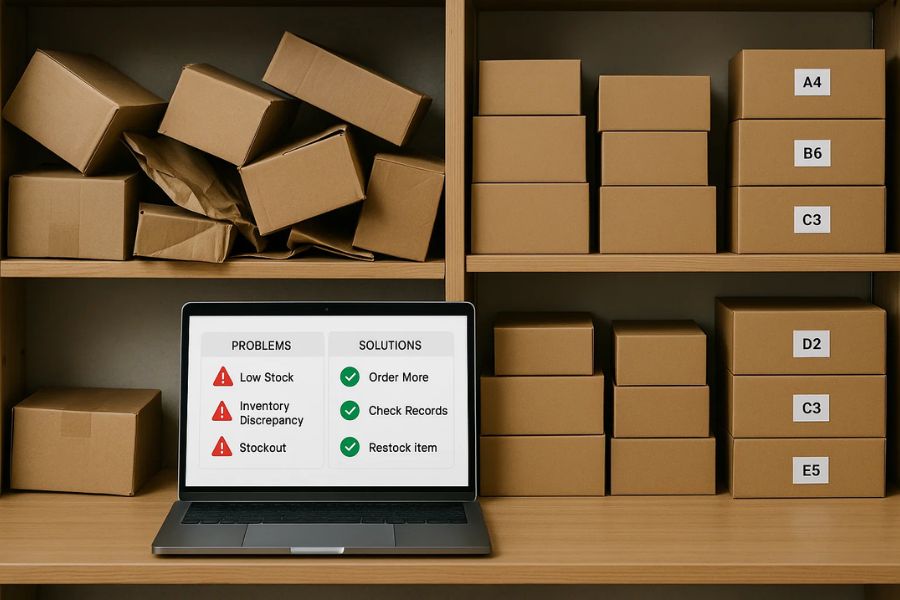
Running a product-based business comes with its share of inventory headaches. Here’s how an IMS addresses them:
Problem 1: Can’t find items quickly
Solution 1: Location-based tracking lets you know exactly where every item is stored.
Problem 2: Overstocking
Solution 2: Forecasting tools prevent you from buying more than you need.
Problem 3: Missed sales from stockouts
Solution 3: Low-stock alerts and auto-reordering keep your shelves full.
Problem 4: Sales across multiple channels don’t sync
Solution 4: Multi-channel integration keeps inventory counts consistent.
Problem 5: Slow order fulfillment
Solution 5: Barcode scanning and order workflows speed up picking and packing.
How should you choose the right IMS?
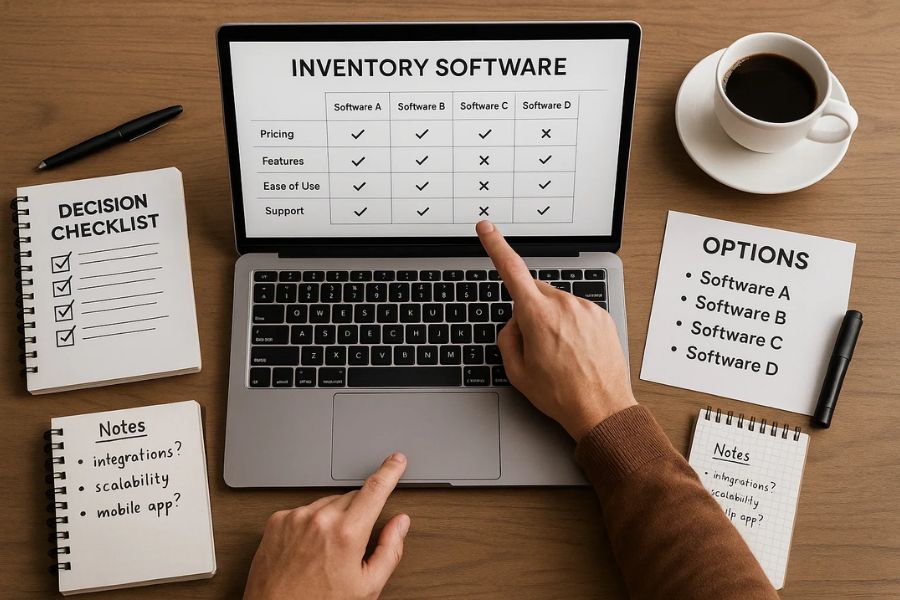
Choosing the right tool depends on your needs, team size, and sales channels. Here’s what to look for:
1. Business size and growth stage
Smaller businesses can benefit from simple, low-cost systems. But if you’re growing quickly, choose one that can scale with you.
2. Features you actually need
Avoid software that’s bloated with features you’ll never use. Stick to what helps you now: tracking, alerts, integrations, and reports.
3. Ease of use
The interface should be easy to navigate. If it takes weeks to train your team, it’s not the right fit.
4. Integrations
Make sure it works with your ecommerce platform, POS, accounting tools, and shipping systems.
5. Customer support
Look for live chat, phone support, documentation, and training resources. Support makes a big difference during setup.
Frequently asked questions about IMS
Q1: Do I really need an inventory management system if my business is small?
A1: Yes. Even the smallest businesses benefit from having an organized way to track their products. A good inventory management system helps prevent costly mistakes like selling items you don’t have or buying too much of what you don’t need. It also saves you hours of manual work and sets your business up for growth.
Q2: What is the easiest inventory management software for first-time users?
A2: Some of the most beginner-friendly options include Sortly, Zoho Inventory, and Square for Retail. These tools are known for their intuitive interfaces, easy setup, and helpful customer support. Many offer free trials, so you can test them before committing.
Q3: Can I manage inventory from my smartphone or tablet?
A3: Yes. Most modern inventory systems offer mobile apps or cloud access so you can manage stock, scan barcodes, and view reports from your phone or tablet. This is especially useful if you’re always on the move or managing a warehouse floor.
Q4: How much does an inventory management system cost?
A4: Prices vary widely. Basic inventory apps may start around $0–$30 per month, while more advanced systems can cost $100+ per month, depending on features, users, and integrations. Many tools also offer scalable pricing, so you only pay for what you need.
Q5: How long does it take to set up a new inventory system?
A5: If your product list is organized and you’re using beginner-friendly software, setup can take just a few hours. For businesses with large or complex inventories, it might take a few days to import data, set up warehouse locations, and train your team. Most platforms offer setup guides or onboarding assistance to speed up the process.
Q6: Do inventory systems integrate with ecommerce platforms like Shopify or Amazon?
A6: Absolutely. Integration is a key feature of many inventory systems. The best tools sync with platforms like Shopify, Amazon, Etsy, WooCommerce, and eBay, allowing your inventory to update in real time across all your sales channels.
Q7: Can inventory software handle returns and damaged products?
A7: Yes. Most inventory systems allow you to log returned items, restock them (if reusable), or flag them as damaged. This helps you maintain accurate inventory records and reduce shrinkage or waste.
Q8: Will an inventory system work for both online and physical stores?
A8: Yes. Many systems are designed for omnichannel selling, meaning they can track inventory for both your online store and physical retail location at the same time. This keeps your numbers in sync, no matter where the sale happens.
Summary
In summary, an Inventory Management System (IMS) is a software tool that helps businesses track, organize, and control their stock levels, product locations, and inventory movements in real time.




